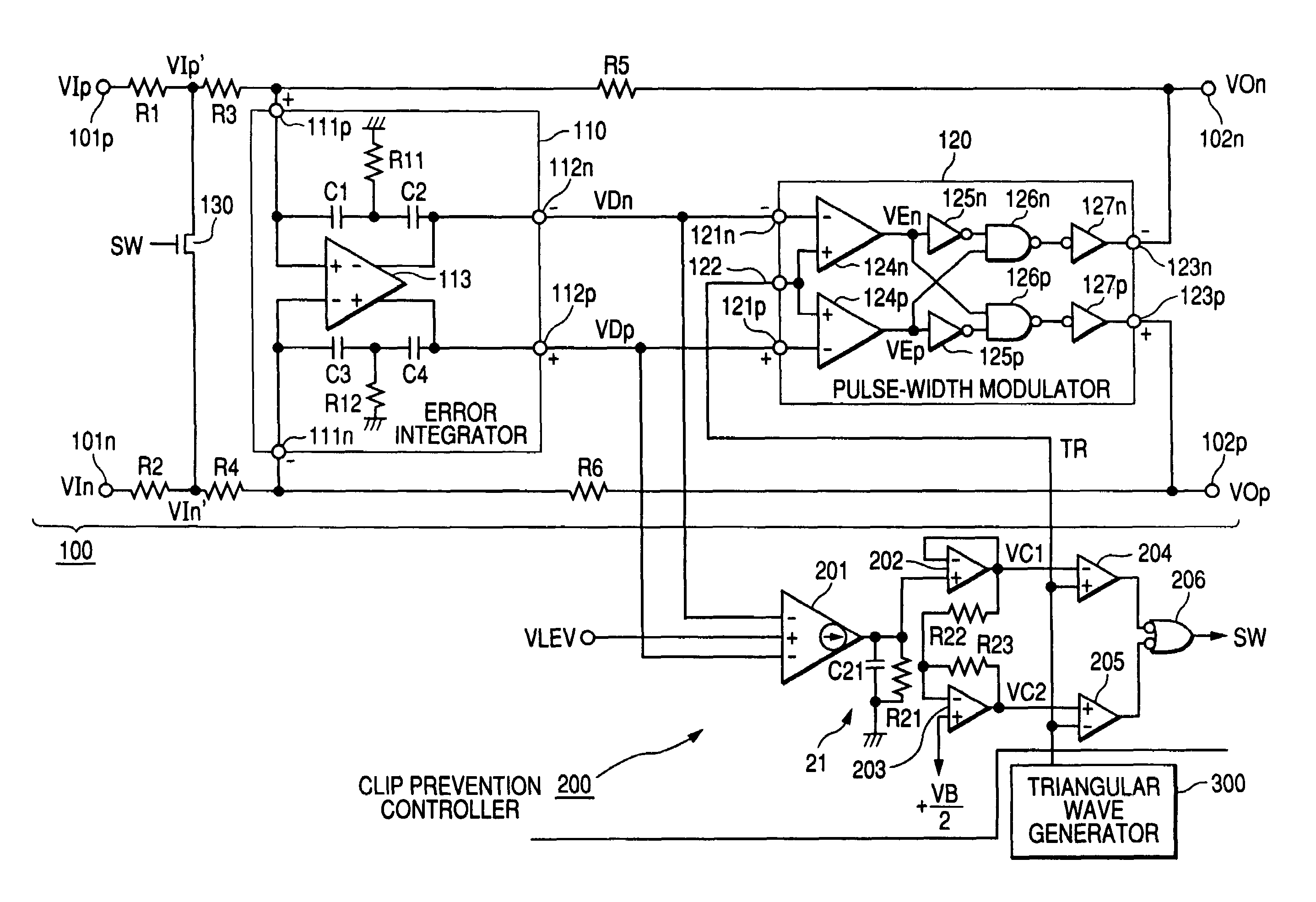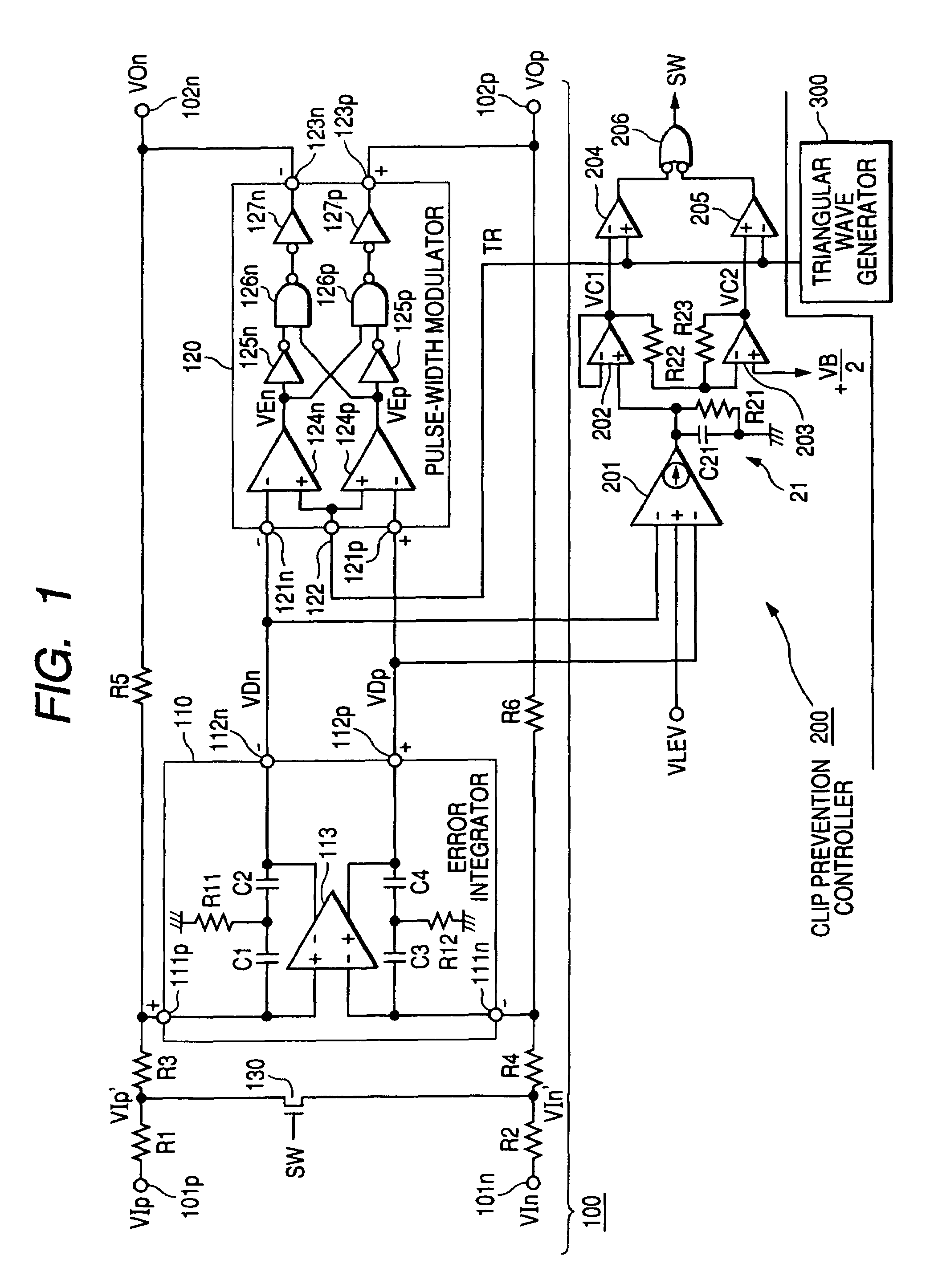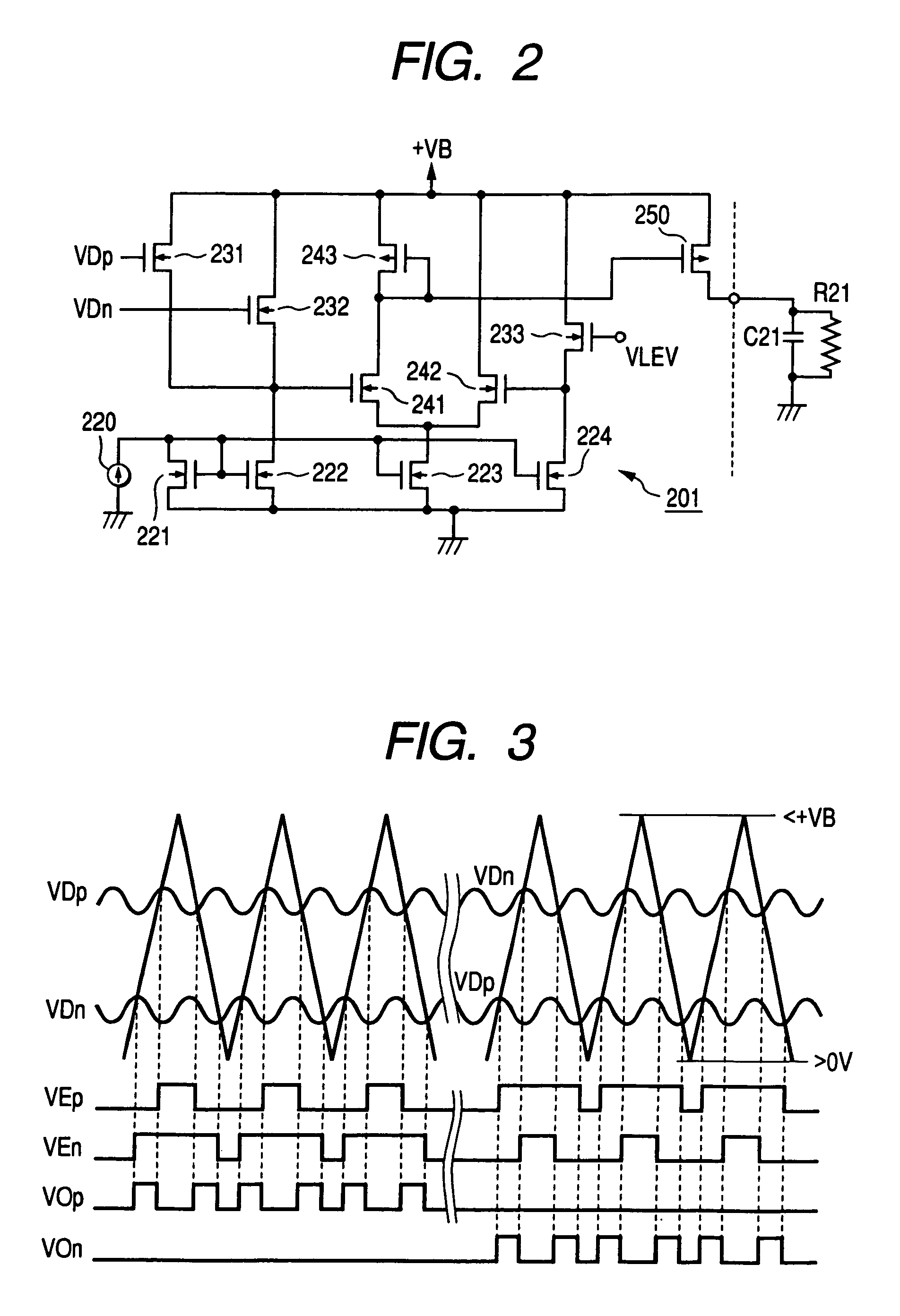Class D amplifier
a class d amplifier and amplifier technology, applied in the direction of amplifier protection circuit arrangement, amplifier with semiconductor devices only, amplifier with semiconductor devices, etc., can solve the problems of degrading the quality of the sound regenerated from the speakers, signal input to the power amplifier, and unpleasant sound output from speakers, so as to reduce distortion, reduce amplifier gain, and prevent clipping the effect of digital signal
- Summary
- Abstract
- Description
- Claims
- Application Information
AI Technical Summary
Benefits of technology
Problems solved by technology
Method used
Image
Examples
first embodiment
[0045]FIG. 1 is a circuit diagram showing the configuration of a class D amplifier according to the first embodiment of the invention. The class D amplifier roughly includes an amplifier part 100, a clip prevention controller 200, and a triangular wave generator 300. The triangular wave generator 300 is a circuit that generates a triangular wave signal TR of a constant cycle changing in the shape formed by a linear slope within the voltage range of 0V to +VB and supplies the triangular wave signal TR to the amplifier part 100 and the clip prevention controller 200. The amplifier part 100 is a device for generating a digital signal to drive a load based on an input analog signal. Specifically, the amplifier part 100 is a circuit for generating a positive phase digital signal VOp and a negative phase digital signal VOn which are pulse-width-modulated according to the levels of the positive phase analog input signal VIp and the negative phase analog input signal VIn supplied to input t...
second embodiment
[0072]FIG. 5 is a circuit diagram showing the configuration of a class D amplifier according to the second embodiment of the invention. In the first embodiment (FIG. 1), the output current from the current output comparator 201 is used to generate two comparison voltages VC1 and VC2 crossing the triangular wave signal TR on the higher voltage side and on the lower voltage side. By supplying the first comparison voltage VC1 and the triangular wave signal TR to the comparator 204 and the second comparison voltage VC2 and the triangular wave signal TR to the comparator 205, the attenuation command signal SW as a pulse train is generated.
[0073]In this embodiment, the triangular wave generator 300 in the first embodiment is replaced with a triangular wave generator 300A for outputting positive phase and negative phase triangular wave signals TRp and TRn. Accordingly, the pulse-width modulator 120 in the first embodiment is replaced with a pulse-width modulator 120A for performing pulse-w...
third embodiment
[0076]FIG. 6 is a block diagram showing the configuration of a class D amplifier according to the third embodiment of the invention. In this embodiment, the clip prevention controller 200 in the first embodiment is replaced with a clip prevention controller 200B. In this embodiment, a pulse-shaped timing signal S is supplied to the clip prevention controller 200B from the triangular wave generator 300 with the timing the triangular wave signal TR is at the positive peak and the timing the triangular wave signal TR is at the negative peak.
[0077]In case clip is absent, as understood from FIG. 3, the output digital signals VOp and VOn obtained with the timing the triangular wave signal TR is at the positive peak and the timing the triangular wave signal TR is at the negative peak are Low. When clip occurs, the output digital signal VOp or VOn obtained with the timing the triangular wave signal TR is at the positive peak and the timing the triangular wave signal TR is at the negative pe...
PUM
 Login to View More
Login to View More Abstract
Description
Claims
Application Information
 Login to View More
Login to View More - R&D
- Intellectual Property
- Life Sciences
- Materials
- Tech Scout
- Unparalleled Data Quality
- Higher Quality Content
- 60% Fewer Hallucinations
Browse by: Latest US Patents, China's latest patents, Technical Efficacy Thesaurus, Application Domain, Technology Topic, Popular Technical Reports.
© 2025 PatSnap. All rights reserved.Legal|Privacy policy|Modern Slavery Act Transparency Statement|Sitemap|About US| Contact US: help@patsnap.com



